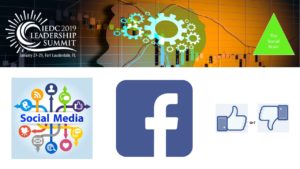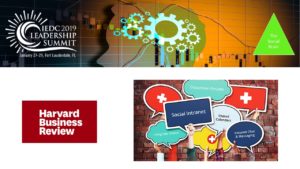This is the second of two articles based on a talk I gave earlier this year. In this article, I talk about the SOCIAL BRAIN, what we know, and why it matters.
Would love to get your thoughts on this!

Modern socializing is … different
Let’s accept that being social matters. But today’s socializing is some kind of rabbit hole into the wonderland of tweets, likes, emojis, and electronic friend requests. This of course begs the question, does it matter — really — whether you’re socializing on-line or in person?
For me, I work remotely. Sometimes I’m in the middle of the ocean, and other times I’m in a country where don’t I know the language and can only communicate by pantomime. Who am I going to have coffee with? Talk to? Laugh with? Connect with? Social communication becomes quite important in this case.
Think about people living in cold areas where they wake up and it’s dark, go to work all day long and then come home in the dark. And, if you’re living in some kind of deep freeze State, you’re just not going to stroll down to the local bar to hang with your buds when it’s minus a million with a wind chill of -273 Kelvin. Doesn’t social media give them a way to connect with their family, friends, random high school people, and review everyone’s random kitten pics and goat yoga vids?
Of course it does. But the question comes back to scientific research and what we actually know to be true. These studies show very clearly that face-to-face social connectedness is strongly associated with well-being. That said, they’re a bit murkier on what happens when those interactions happen virtually.
Some Research
A study of over 1,700 young adults found that more than two hours of social media use a day doubles our chances of experiencing social isolation. And people who visit sites such as Facebook and Twitter a lot (defined as 58 or more times per week) are three times more at risk of social isolation than those visiting them less than nine times per week. Here’s the link to the study from the American Journal of Preventive Medicine in case you’re running out of things to do in your day.
There are several theories to explain the results. One is the most straightforward: the time we spend online has left us with less time to experience real-world interactions. These social networking sites appear to have contributed to a hermit era with “epidemic levels” of social isolation and mental health problems.
The other explanation is reverse causation. In other words, people who are already reclusive tend to resort to social media more anyway. In this sense, being a social media junkie doesn’t cause the problem, it reflects it.
Clearly the bottom line is that more research needs to be done. But while we’re waiting on science to make up our minds for us, we have to make decisions in our workplaces. We have to create the policies that lead to healthier populations of employees.
It’s Complicated

It sounds easy doesn’t it? Reduce social media exposure to improve connectedness and all the rays of sunshine that come along with it. Oh happy day.
However, if we’re being honest about this issue, it’s absurdly complicated and there are a slew of additional variables to toss into this stew. For example, being alone is not the same thing as being lonely. Everyone needs alone time and space away from the rest of the world, but that’s not loneliness. Loneliness is a feeling that something is missing in your life. It can be a feeling of complete isolation even when you’re surrounded by others. A person can have 4,000 friends on Facebook and still feel lonely.
Given all this ridiculous variability, now what do you do at this point? What are the workplace policies for social media that you currently have? Yes or no? How far does your company go? And granted that your policies are informed by local conditions and concerns, but what policies have you come to, and why?
The Truth is in the Middle

These are essentially the findings discussed in the Harvard Business Review. According to this article, any worries that workplace use of social media will reduce productivity are “misguided.” “Social media doesn’t reduce productivity near as much as it kills employee retention.”
In this article, Dr. Bizzi interviewed more than 250 employees within a healthcare organization. He found that people who engage with their fellow employees on social media and through media blogs etc., tend to be more motivated and come up with innovative ideas. However, when employees engage with people on social media who are outside of the workplace, they are less motivated and show less initiative.
“These findings,” he explains “suggest that the effects of social media depend on who employees interact with; employees who interact with their colleagues share meaningful work experiences, but those making connections outside the organization are distracted and unproductive.”
This conclusion suggests that we need to create peer-to-peer engagement among employees with a balance of in person and electronic means. I like this solution because it represents balance. Since social media is here to stay, this kind of strategy allows us to leverage it in a way that empowers our employees by creating meaningful connections at work.



